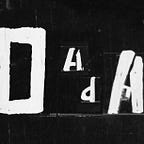When Is Art Ever Finished?
Last week we happened onto the opening day of the new modern and contemporary wing of the Metropolitan Museum of Art, the Met Breuer, which is housed in what used to be the Whitney Museum. The Met Breuer opens with a fantastic exhibition of unfinished art through the centuries. Some of these paintings, particularly in the case of the old masters, look very finished to us. But what is interesting is to be able to witness the process of creating and the end result of a work in progress for which time stood still. Some paintings are particularly beautiful or haunting precisely because they have been left unfinished. Some of them, like this portrait of Michelangelo by Daniele Da Volterra, look modern in their unintended combination of a realistic figure and the abstract, unfinished background.
Unfinished paintings highlight the intentions of the artists. When is a work of art truly finished? Did the artist abandon the task, or did they deliberately decide not to continue because they achieved what they wanted? What about abstract art like Jackson Pollock’s? When did he know it was time to stop dripping paint onto the canvas?
[caption id=”attachment_2701" align=”aligncenter” width=”600"]
Pablo Picasso[/caption]
Unfinished paintings also help to remind us that art is a process. When we see a finished painting it’s as if the end result happened by magic. But painters change, erase, repaint, and work on their surfaces over and over until they are satisfied. A look at unfinished art gives us that sense of time and effort, of infinite possibility on one hand and the constraining choice that make up a work of art.
In this enormously expressive painting by Rembrandt, we don’t know if he meant to continue adding detail or decided that he had achieved his goal. The lack of detail in the clothes and in the hand holding the blade gives it a raw and immediate power.
But surely Dürer did not mean to leave his portrait of Christ in this state. Here we can see the artist’s process in the opaque transparency of the orb and in the unfinished status of the face, whose features have been delicately sketched by pencil but are untouched by oil paint. Usually, there would be a landscape in the background as well. Look also at the unfinished contours of the raised hand. Dürer still had a lot of detail to add to make it more seamless and true to life, as was the style at the time. However, it looks modern to us, because modern art moved away from painstakingly realistic detail towards freer expression.
This may be why a lot of unfinished art seems very expressive, as painters tend to start by the face and the hands and leave the clothes and background for last.
This unfinished Rubens reminds us of the mural paintings of 20th-century artist David Alfaro Siqueiros. Its unfinished nature highlights the powerful movement and the dynamics of the battle, making it look more modern than it is.
Modern artists also left paintings unfinished, but in their case, it is harder to tell, like in this painting by Alberto Giacometti of his wife. There are many unfinished paintings of artists’ wives and lovers. Perhaps because they were not commissioned and were an unremunerated labor of love? Or the artist had to make ends meet and did not have time to finish, or they had a fight? Unfinished paintings leave a lot of fun room for all kinds of speculation.
Some unfinished work has a surreal quality. In this painting, the human forms seem done but the background and foreground are not and this gives it an eerie feel. It’s hard to tell if El Greco was finished with this painting, as he was a uniquely modern and unusual painter for his time.
This painting by Anton Raphael Mengs looks almost like a Magritte. The missing features of the face and the cat (or dog) give it a surreal quality, particularly as her hands are so lifelike and detailed.
In the case of this beautiful Gustav Klimt, he was commissioned to paint this portrait after the woman’s suicide, and then the artist himself died before he could finish. Through this work, we can better understand the process by which he created his richly adorned paintings.
But Alice Neel decided to leave this portrait of this young man unfinished because he was drafted to the Vietnam War and did not come back for a second sitting. Even if we don’t know the back story of this painting, there is something sad and stunted about this strong young man. His head is solid but the rest of his body seems to vanish under him. Leaving something unfinished can be a powerful expressive and symbolic choice.
When you draw on DADA, when do you decide your work is done? Have you ever felt that you should have continued, or that you should have left it alone?
